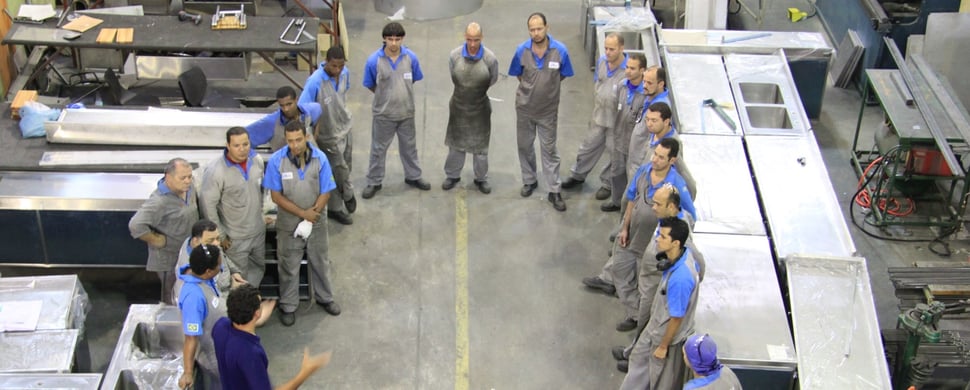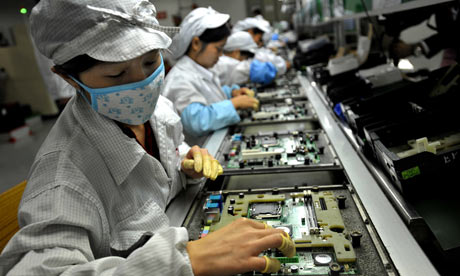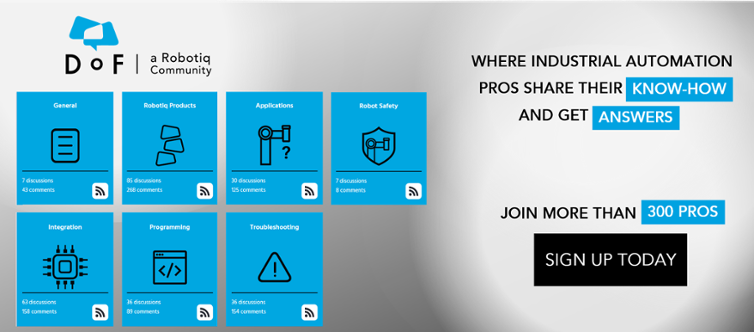In-house vs Outsourcing: How to Source Robotics Expertise

How do you choose between investing in in-house robotics expertise and paying for an outsourced integrator? In this article, we discuss five important considerations for choosing who will integrate your collaborative robot setup.
We all know the benefits that collaborative robots can have for our businesses. They're cheap, flexible, fast to integrate and have a small footprint on the workshop floor. On the Robotiq blog, we have provided loads of advice about how to ease the integration process, best practices when setting up an automation cell and a whole collection of free eBooks to make integration as easy as possible.
But, there's one big question we haven't answered: Who should carry out the integration!?
We have shown that buying robotics is cheaper than outsourcing labor, meaning that robotics is a good way to keep manufacturing in-house. Is the same true for robotics expertise? Should you hire an external robotics integrator or invest in training for your in-house workforce?
In this article, we compare in-house robotics expertise with outsourcing to find out which factors are most important.

Insourcing Is Dead? Outsourcing Is Dead? Who do I Believe?
You would be forgiven for getting confused when you look for advice about outsourcing. Some commentators proclaim "outsourcing is dead" whilst others insist "outsourcing is the future." It's impossible to know who to believe, as the arguments for both insourcing and outsourcing are both very compelling.
The dilemma is not unique to robotics. It is present in various fields, including training, software development, technology adoption and maintenance.
In fact, almost every manager has asked themselves, at least once: Should I outsource this task or bring it in-house?
The simple response to such contradicting trends is just to ignore them. Don't believe any one source of information. Sure, keep yourself informed about what other companies are doing, but don't think "I must outsource because apparently everyone is doing it." Similarly, don't fall into the trap of thinking "I must do it this way because that's the way we've always done it."
The advantages of both insourcing and outsourcing are constantly changing as the market changes. The best way to assess your need for robotics expertise is to examine it on a case-by-case basis, whilst keeping an open mind.
How Insourcing and Outsourcing Apply to Robotics
There are at least three ways that insourcing and outsourcing can apply to robotics. Firstly, as we've discussed in the past, you can use robots as an alternative to outsourced labor. Secondly, you can outsource the robotic technology itself by buying into a robot-as-a-service program, such as the one we saw this year at Automatica 2016. Finally, you can outsource the robotics expertise.
How to Outsource Robotics Expertise
Outsourcing your robotics expertise will usually mean hiring an integrator. Good integrators will have deep knowledge of the technology and continually reeducate themselves on the newest developments within automation. Choosing an integrator can be a tricky task. See our previous post for a list of guidelines to follow when shopping for an integrator.
How to Develop In-house Robotics Expertise
Developing in-house robotics expertise basically boils down to training. Instead of paying for an integrator, you invest in training your workforce to carry out the task of the integrator. In the past, when automation required traditional industrial robots, this training would have been long and expensive. However, with the advent of collaborative robots this has all changed.
Training an employee to program a collaborative robot can take as little as half a day of on-site training. This is the reason that insourcing robotics expertise has become a very attractive proposition. Our 3-part blog series "How to Integrate Your First Robot" looks at some of the main stumbling blocks for in-house robotic integration.

Insourcing vs Outsourcing: The Showdown
In this section we lay out five of the main considerations for in-house vs outsourced robotics expertise. We provide a few examples of each category, but there are likely many more. Try to add some more considerations for yourself, which are specific to your business.
Cost
Cost is usually the first consideration when comparing two solutions. However, keep in mind that it might not be the most important, even though it is "the bottom line."
|
In-house expertise |
Outsourced |
|
|
Flexibility
One of the biggest advantages of in-house expertise is flexibility, which also happens to be one of the main advantages of collaborative robots.
|
In-house expertise |
Outsourced |
|
|
Quality
The quality aspect of robotic integration refers to whether the robot performs as expected.
|
In-house expertise |
Outsourced |
|
|
Control
Maintaining control over process is at the core of many businesses. Outsourcing inherently means giving up some of that control to another company.
|
In-house expertise |
Outsourced |
|
|
Convenience
Collaborative robots are a very convenient form of automation, and both insourcing and outsourcing can extend this convenience.
|
In-house expertise |
Outsourced |
|
|
Which Should I Choose? In-house or Outsourced?
In the end, the choice of whether you use an outsourced integrator or invest in in-house expertise depends on your business needs and available resources. Hopefully, the considerations listed in this post have given you a good place to start.
Remember that you don't have to go "all in-house" or "all outsourced." You can also choose a hybrid approach by, for example, training the workforce on the basics of robotic integration and then using an integrator when you want to add complexity, such as when adding extra sensors to your robot.
What factors do you consider when choosing between in-house and outsourced robotic expertise? Are there any jobs you would never give to an external company? Are there any jobs you would never do in-house? Tell us in the comments below or join the discussion on LinkedIn, Twitter or Facebook.








Leave a comment